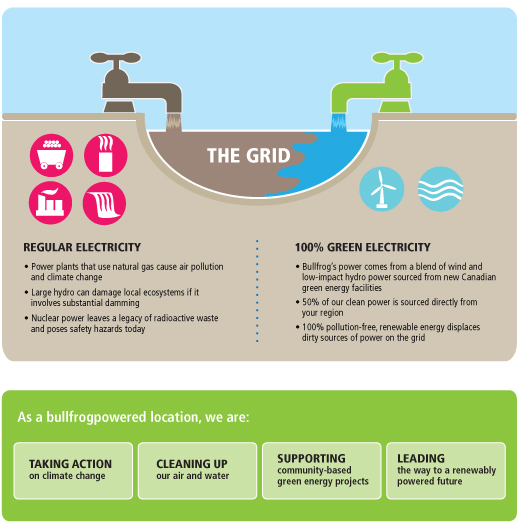Green Electricity and Upstream Sustainability
Analyses reveals that the vast majority of buildings which are currently built will still be standing in 20-30 years. Though we can expect some to be renovated, the performance and operational demands (heating, cooling, lighting) will remain the same. Initiatives and legislation which focuses on making new buildings more sustainable, such as Energy Disclosure and Benchmarking Laws, are important, but must be complemented with “up-stream” sustainability.
Upstream sustainability is found by the adoption of lower emission-based power sources by Energy Providers. Because the buildings which the energy providers will be providing energy to are mostly already built (at least in the Europe and North America), initiatives like the Architecture2030 Challenge which aims for carbon neutral new buildings and renovations by 2030, are, in this sense, downstream. Both complement each other and play a role in reducing the overall impact of building on our environments.
Bullfrog power is one energy provider whose power comes from a blend of wind and hydro power sourced from new Canadian green energy facilities. 50% of the power is sourced from a customers region and 100% is “pollution-free” renewables. It works by adding the amount of energy you use into the grid in the form of green energy.
“Through the Bullfrog Builds Renewable Accelerator program, Bullfrog customers are advancing local and community based renewable energy projects in their regions, and throughout the country. Bullfrog uses customer support to provide critical financing to help these smaller solar, wind and biomass projects through the construction and development phases—which can be the most difficult phases. ” – Bullfrog Builds Renewable Accelerator Program brochure.
By opting to use Bullfrog Power we can enable massive reduction in our building and firms emissions from operations. Let us know what you think of BullFrog power and if you have any ideas about upstream sustainability.

